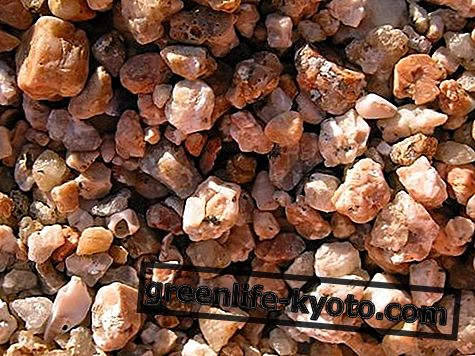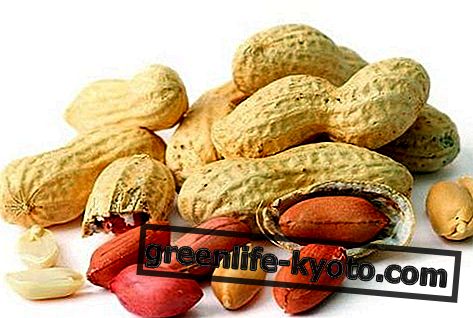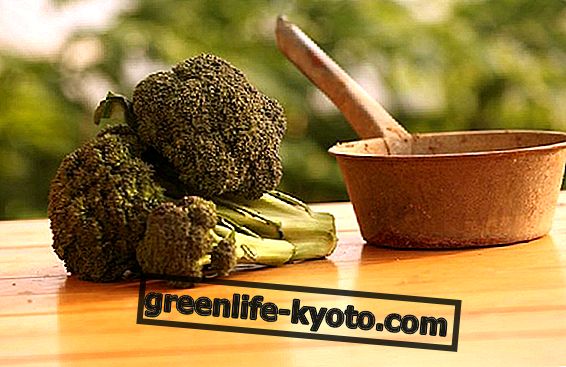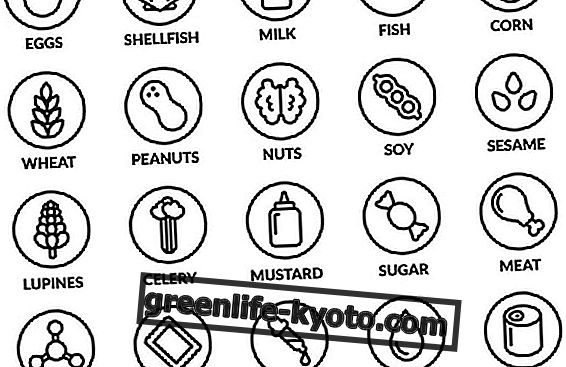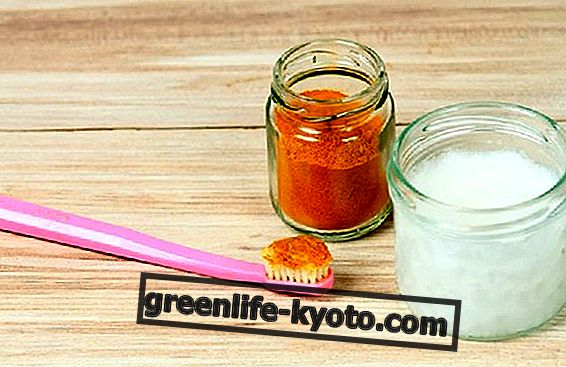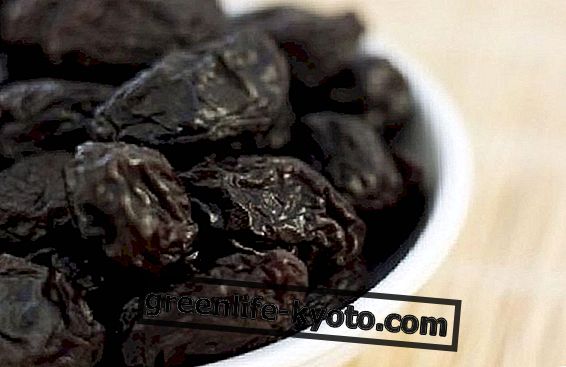Essential oils are very valuable substances, extracted from the so-called aromatic plants, and known since ancient times.
They can be used both for inhalation and for oral intake, but also for epidermal absorption thanks to massages and foot baths. Let's find out what are the main essential oils, and the tips to use them.
>
>
>
>
>
>

Capturing the fragrant essence of plants and preserving their fragrance is an activity pursued by man since ancient times. The extraction of aromatic essences is an ancient art, which has engaged man since time immemorial.
Our early ancestors had understood the powerful effects of aromas and used them in religious ceremonies, in the preparation of perfumes and ointments and as first therapeutic remedies, through fumigations of aromatic woods and resins, to induce calm and relaxation or euphoria .
What is meant by essential oils
Essential oils or essential oils are natural products, obtained by extraction from plant material rich in " essences " belonging to herbs and officinal herbs, so-called " aromatic ". Once extracted, they appear as oily, liquid, volatile, and perfumed substances like the plant they come from.
Despite being called "oils" their molecular structure and consistency is very different from the normal vegetable oils to which we are accustomed. Essential oils are substances of very complex composition that represent the most regal part of the plant, present in the form of tiny droplets in the petals of flowers, in the skin of fruits, in the resin and in the bark of trees and in the roots of herbs and aromatic plants.
They are volatile elements, soluble in alcohol and oil, but not in water. The quantity contained in a vegetable depends on the species, the climate and the type of soil.
Their functions in plants
Essential oils perform multiple functions, through chemical-hormonal stresses:
- They attract pollinating insects responsible for transporting pollen from one flower to another, through the smell that simulates that of sex hormones secreted by insects.
- Conservation of the species through the antagonism between different plants: through the rain, the essential oils rest and penetrate the soil, preventing different plants from sprouting, thus preserving their species
- Give plants an unpleasant taste, to prevent being eaten by herbivorous animals
- To defend against parasites, through the hormonal action that the essence plays on the insect's organism
- Protect from infections of fungi and mold bacteria, also promoting the healing of damaged plant tissues.
The properties and applications of essential oils
When we smell the scent emanating from a plant, the aromatic molecules reach our olfactory mucosa, located on top of the nasal cavity, covered with "cilia".
These olfactory cells transform the odor, the chemical stimulus, into an electrical impulse . This impulse thus reaches the brain, where it binds to a previous olfactory impression, recalling more or less beautiful emotions .
Inhalation is therefore the most direct and immediate application, as the olfactory stimulations are the only ones to pass directly into the cerebral cortex, without being filtered by the thalamus receptor center, for a preliminary analysis.
This explains why a smell or perfume can instantly evoke extremely vivid memories of lived experiences, even a long time ago.
In this case, in fact, more than a simple memory it is almost a matter of reliving the past experience, which reappears powerfully. The memory triggered by an odor is therefore much more intense than that evoked by an image or a sound.
For this reason, in thin aromatherapy, essential oils are used to rebalance the psychic and emotional sphere .
Applications in this area can be environmental diffusion, aromatic baths, fumigations, saunas .
Once inhaled, they reach the lungs, penetrate the capillaries below their surface and, through these, spread into the major blood vessels, which distribute them to the whole organism.
Furthermore, the molecules of the essential oils have a lot of affinity with the tissues of the human body, therefore they easily manage to penetrate the skin, passing through the hair follicles, enter into circulation, through the blood or through the lymph and interstitial liquid.
The applications in this case are topical use, through massages with essential oils, or dilutions in vegetable oils, creams, ointments and lotions or more simply in baths, showers, foot baths etc., thus favoring their epidermal absorption .
Finally, some essences can also be taken internally by diluting 2 drops in honey. Although every essential oil has its own specific activity (balsamic, rubefacient, digestive, healing and relaxing, purifying), all essential oils, although to varying degrees, have antiseptic and antibiotic properties and are able to support our defenses immune.
Always asking first for the opinion of an expert, it is therefore also possible to take them orally .
Essential oils are also useful in the practice of chromotherapy

The notes of essential oils
Essentially depending on the characteristics of essential oils, from an aromatic point of view they are divided into 3 notes:
- Top note : it is given by the scents that are felt first and dissolve quickly. They are very volatile and have a very high and subtle vibration, which acts from the bottom upwards. They can be fresh or fruity essences like those of citrus fruits, with a calming effect on the nervous system, or pungent and mentholated like those of balsamic oils, with beneficial effects on the respiratory and circulatory system.
- Heart note : soft and floral essences have it, with medium and wide volatility that leads to the heart, with a rebalancing and vitalizing effect, active especially in moments of great agitation or sadness. These are the sweet and slightly sour notes obtained from the flowers and leaves .
- Base note : these are the oils that emanate from the warm and heavy perfume, with less volatility, obtained from woods, resins and spices and have a tonic, rubefacient and invigorating effect . The vibration is low, heavy and deep, leads to the earth: on the psychic plane they help to give stability and strength.
extraction
The extraction technique varies according to the part used (drug) of the plant from which it is obtained and the right procedure is fundamental to guarantee the highest quality.
- Pressing : consists of a mechanical extraction process that is performed cold and does not include any chemical treatment. It is used to obtain the essence present in the rind of the fruits, mainly citrus fruits.
- Steam distillation: this is one of the most widely used methods for extracting essential oils from the most resistant parts of plants, which tolerate more heat, such as wood, bark, resins and leaves . It is carried out using the distiller which consists of an instrument with several watertight containers, a steam generator and a cooling coil. In this way it is possible to separate the volatile substances, exploiting evaporation.
- Enfleurage: is the method used to extract essential oils from the petals and from the very tender parts of the plants, which otherwise would easily be damaged in the presence of heat. The flowers are placed on slabs covered with purified fat, taking advantage of the ability of fats to absorb odors. The flowers give their perfume to the fat and are replaced with other flowers, until the fat is saturated with perfume. Then the fat is dissolved with alcohol and then the essential oil is separated.
- Extraction using solvents: this type of extraction is used for precious aromatic plants, such as rose and jasmine, with essences that do not resist heat. It consists in passing through a solvent, which extracts the essence and then removes it.
Origins and history
There is evidence of their use in India, China, the Middle East and Europe. However at the beginning the perfume of the plants was not produced in its pure form, that is in the form of essential oil, but it was always conveyed by a solvent, a vegetable oil or a fatty substance like ointments and balsams, so there is no ancient use of essential oils, if by antiquity we refer to classical antiquity.
The perfumes or perfumed oils mentioned in documents of Mesopotamian and Egyptian, and then Greco-Roman origin, are to be understood as oleolites (extraction of essences by maceration in oil) or as raw resins (for example incense, myrrh, sandal, etc.). The medical-religious or rational uses of aromatic plants in antiquity refer to the use of the plant in its entirety and not to the essential oil .
However, the Egyptians were very skilled in the use of aromatic plants and adopted their fragrances in cosmetics, as well as in medicines, but above all knowing their powerful antiseptic and antibacterial action, they used them in the laborious procedure of mummification, to preserve the bodies of pharaohs and block the process of putrefaction.
The Greeks enthusiastically inherited the use of essences from the Egyptians, to flavor their food and drink as well as their bodies and clothes .
The first to extract the most volatile and thin parts, were the Arabs with the invention of the still, which allowed, in fact, to extract the aromatic essence of the plant, in its purest form, by distillation.
Today aromatherapy is the branch of phytotherapy that treats diseases and preserves health and well-being, exploiting the virtues of essential oils extracted from plants.
This is considered in all respects a holistic discipline, since their action is never just something limited and highly specific for an organ or an apparatus, but rather they have a more general action on the organism in all its affections .
The French chemist, Renè Maurice Gattefossé, to whom the invention of the term "aromatherapy" is attributed in 1928, contributed to the revival of the interest in the use of essential oils for therapeutic purposes.
READ ALSO
The sale of essential oils
Other articles on essential oils
> Home deodorants made with essential oils
> The functions and applications of essential oils
> The process of extracting essential oils
> Circulatory stasis? Let us help ourselves with essential oils
> The oils for each dosha
> Oils, oleolites and vegetable oils: what differences?
> Relaxing essential oils: what they are and how to use them
> Incorrect use of essential oils
> Essential oils for hair
> Essential oils for breast care
In collaboration with Erboristeria del Pigneto


